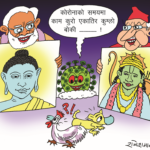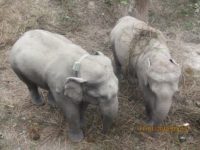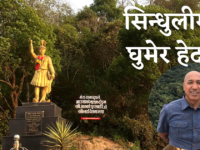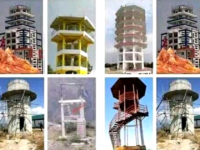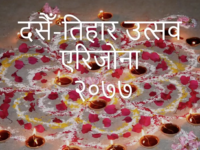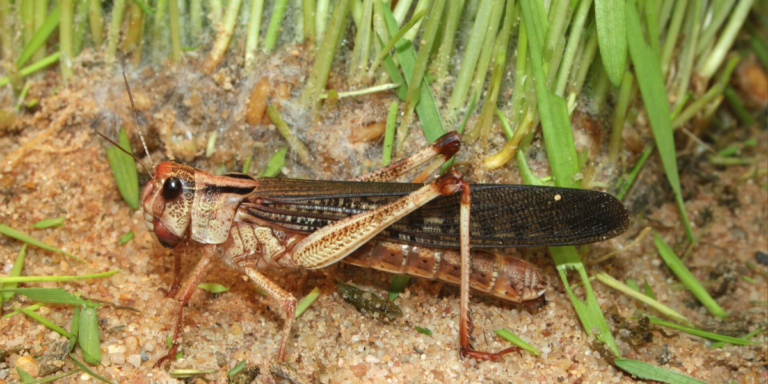By Om Tat Sat,
Back in June, there was already a havoc occurring in the Indian states because of locusts that were swarming across many states. This was attributed to the changing wind patterns related to the monsoon. When corona came to teach a lesson to wayward humanity, it also solicited the locusts to help it. How do you know? Easy.
Corona is not much of a threat, really, although it can get easily transmitted through air amongst humans, but the survival rate is higher than the mortality. In India and Nepal, the major problem related to corona is hunger, having lost means of earning for billions of poor people. While hunger has become the most pressing concern, locusts is here just to make sure that the crops get destroyed, and food become scarce. That is a one-two punch of corona.
Check this out too : Covid-19: Nepali Art Teacher Lightens Up With Cartoon Messages
This how CNN has portrayed this menace:
“Waves of desert locusts — millions strong and stretching up to 7 kilometers (4 miles) long — crossed into India’s western state of Rajasthan from neighboring Pakistan in early May and swarms have since pushed into five different states in search of food.”
As we can imagine, the threat like this, the worst in 30 years, that threatens food security can be categorized as the highest menace. And we are still in July, facing a second wave of locust invasion.
The latest news for Nepal was the locusts already in Dadeldhura district. Farmers are fearing for their corn crops and trying to take action, mostly by making loud noises. They have always been fearful of the wild bored destroying their crops, now there is an aerial peril to add to their quandary.
But the good news for Nepal is that some hidden force is protecting the farmers. It seems the locusts that are doing so much harm in Pakistan and India seem to be more on a tourist visit here. Now I am sure all those VYN 2020 advertisements must have attracted these locusts. This idea gets a boost when we observe that they quickly spread to 27 districts of Nepal.
According to the Nepali Times magazine, the locusts entered Nepal without visas on June 27 from three points, Sarlahi, Bara and Rupandehi, enjoying the nature preserves and then headed towards hill views of Palpa, Dhading and Sindhuli. I am sure they must have been heading to the Taj Mahal of Nepal, the Rani Durbar, in Palpa. Not only that they also were seen in districts as high as Khotang, Okhaldhunga, Rukum West, Mustang and Solukhumbu—all touristic sights they must have loved.
Either the Nepali crops are not that tasty like the Indian ones, or as I surmised earlier, they were more on a touristic mission; the crop damage was low in Nepal. But the same monsoon wind that brought them to Nepal also helped control them by the rain, which the locusts are not very fond off, and run away to the forest instead of snacking on the crops.
Add to that the genius we have in the Nepal government. How could anyone even date to damage Nepal’s crops? Take, for instance, the news that went quite viral. Ghanshyam Bhusal, the agriculture minister managed to get a clue on how to kill the locusts instantly from one Nepali student in Australia. The secret to locust control was as simple as playing the heavy metal music. Deed done. Locusts dead. Crops saved. Problem solved. Why did not these Indians ever learn from Nepal. They could have saved a lot of trouble. They just focused on using the drone, tractors and loud noises. Apparently, the locusts were not amused.
On the contrary, when the locusts entered Nepal, they did not focus on eating at all. How could you explain that? They were reported to be more flighty here. That means they forgot to eat, so they must have been distracted. And in Nepal there is nothing better than the majestic Himalayas and Mahabharata range to take away the mind to higher pleasures in life. Even the locusts forgot to eat. Nepal was saved.
Actually, the minister has a good point. Heavy metal music can actually do a lot of damage. Although, killing the locusts on the spot is a stretch. Sound vibrations have deeper level effect that has been proven by scientific experiments. One such experiment was done by Japanese scientist Masaru Emoto on effect of music on water. You can compare the effect of healing music to the heavy metal music. It is a famous experiment, world renowned. Effects of classical music on fetal babies and cows have already been studied to show positive effects.
We should be thankful to the locusts for many reasons. First, they visited Nepal in VNY 2020, responding to the massive campaign launched by the able people in the tourism department. There were 8 million locusts, meaning 40 percent of the targeted tourist. That is something to be grateful for, except, they surprised us all. They chose their own hostels and restaurants than we have prepared to welcome them. But all the power should go to the tourists.
Second, we now have better tools to be prepared for next such visitations. At least, we will get to be well-prepared to host them. Lastly, We should learn to practice gratitude to all those things that bless us. Locusts came here to bless, and took some food as Prasad, but did not wipe us out. They could have been true form of Durga Devi annihilating Mahisasura, but did not. Listen to what the Himalayan Times said:
A swarm the size of Niamey (Niger) or Bamako (Mali) eats the same amount of food in one day as half the respective country, as per the FAO. A swarm the size of Paris eats the same amount of food in one day as half the population of France; the size of New York City eats in one day the same as everyone in New York and California; the size of Rome eats the same of everyone in Kenya; the size of Sydney (Australia) eats the same amount of food in one day as Australia eats in 1.5 hours, adds FAO.
Nothing like that happened in Nepal. So, we can all rest assured that Nepal has many friends in nature and beyond the observable universe. We are protected.
The writer is a graduate of Arizona State University in Political Science. He is working as a social activist and motivational speaker for students across Nepal since 2007. He also blogs at Strong Blog.
The views and opinions expressed in this article are those of the author and do not necesarily reflect the official policy or position of Nepalisite.



